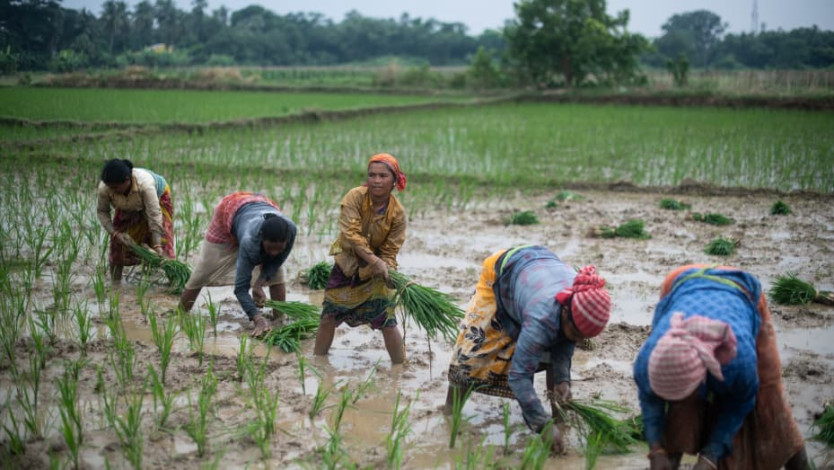
File Photo
The fact that you're reading this article means you probably live in some kind of urban environment. It also means that on many days, you find yourself torn, sticking to the main course of rice, or treating yourself to something a little more extravagant for the next meal.
Unfortunately, this is hardly the case for the impoverished in India, many of who resort to meals like plain nemak-bhat (cooked rice with plain salt) to pull them out of starvation. India's Public Distribution System helps provide them with grains for the month, but even that falls short oftentimes.
With millions of Indians devastatingly reliant on rice as their staple food, it is imperative that we maintain our crop yields to ensure adequate supply to every sect of society. However, a new report has shown that excessive atmospheric carbon dioxide levels could affect rice yields significantly in low- and middle-income countries, including India and China.
A study published in the journal Nature Geoscience has shown that high atmospheric CO2 levels can reduce phosphorus availability in soils by more than 20% in rice fields. Since phosphorus is an essential fertilizer for the crop, this could substantially affect final yields.
How substantially? By as much as 55%, it turns out. The research has pinpointed that over half of large rice paddy fields in India and China could experience an increased risk of yield reduction due to this phosphorus deficiency.
This isn't the worst of it either; other low-income countries in Southeast Asia, Central America, Africa and the Middle East could see even riskier percentages, going up as high as 70% in some places.
Atmospheric CO2 is actually an excellent source of carbon for crops, which helps increase their photosynthesize more, improving plant growth, biomass and yield. However, the study revealed that this was actually a double-edged sword since its long-term presence impoverishes the soil of phosphorous.
Furthermore, phosphorus as a chemical fertilizer is unevenly distributed worldwide, making its import exceedingly valuable to countries without the resource. India is a prime example, with the country 90% dependent on rock phosphate as the key raw material in DAP and NPK fertilizers. In the past, phosphorus import prices have skyrocketed during food crises, which can severely exacerbate the food security of countries with inadequate purchasing power.
Source:
Online/GFMM
Comment Now